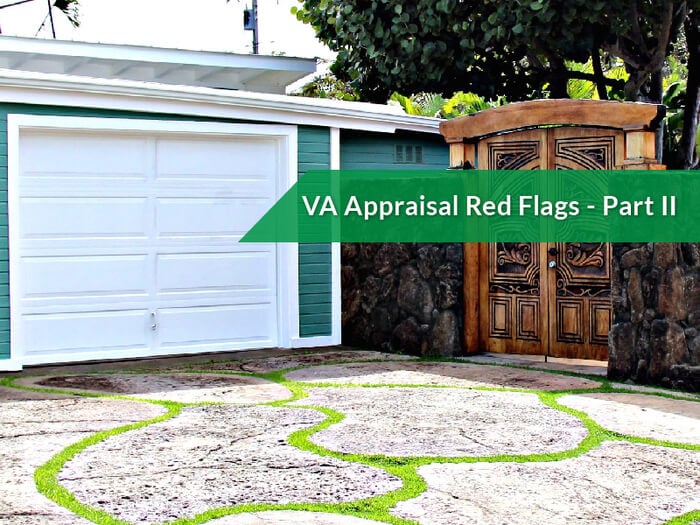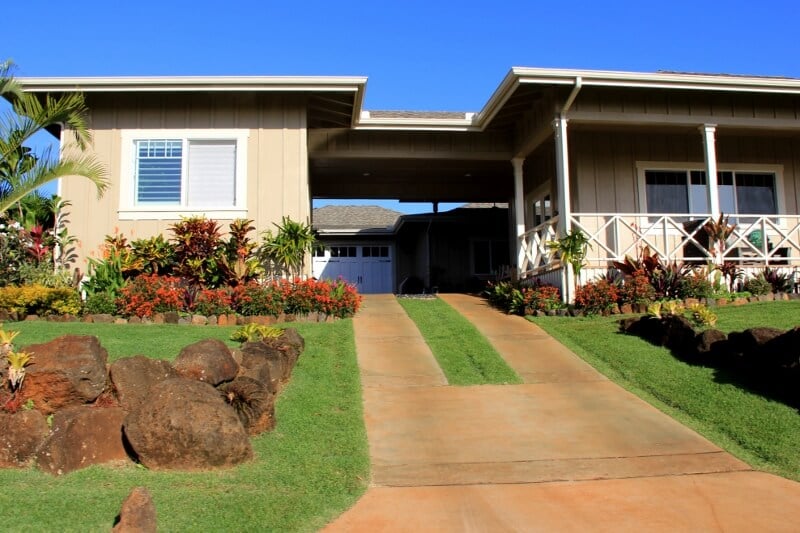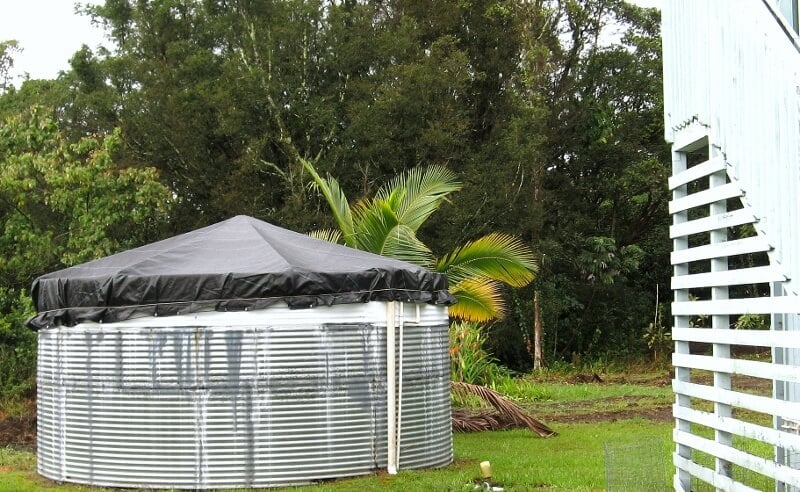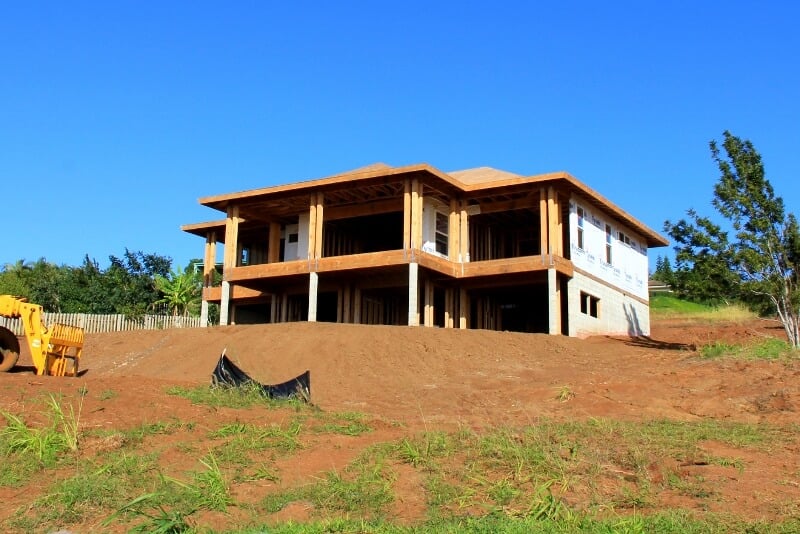In our first installment, Top 5 Property Red Flags on a VA Appraisal, we discussed the VA’s Minimum Property Requirements (MPRs) and what property issues have been known to arise, as well as their solutions. In Part II, we will discuss some additional red flags that can occur in the VA appraisal process.
These particular issues aren’t common in and of themselves, but when combined, do occur with relative frequency. Rarely will they prevent the loan from closing, but there is often extra work and time involved. Our goal is to make sure you’re informed and ready, should you see one of these issues affect your future VA financing timeline.
Onward we go! Don’t forget to grab a snack!
1. Private Roadway: Update! As of November 25, 2022, the VA announced that private roads and shared driveways no longer require maintenance agreements to obtain VA loan financing. Read more here.
Occasionally a property can only be accessed via a privately owned road or driveway. This is typically more common for recently built condominiums or properties located in rural areas where long driveways and non-city and county maintained roads are plentiful.
The VA is primarily concerned that the homeowner has continued, reliable access to the property. In order for that to be assured, the following must be documented:
- The property must be provided with a safe and adequate pedestrian or vehicular access from a public or private street.
- The private streets must:
- be protected by a permanent easement
- be maintained by a homeowners association or joint maintenance agreement
- have an all-weather surface
Solution
Depending upon the property type, there are typically two ways to solve the problem:
- For condos & PUDs (Planned Unit Developments), the CC&R’s (Conditions, Covenants & Restrictions) often define how the private road will be maintained. Gathering that will satisfy the condition.
- For single family homes with shared access to or ownership of a private road, the process may vary case by case. The typical solution is to obtain a copy of the easement & the road maintenance agreement (typically found in the title documents for the roadway parcel).
2. Legal Non-Conforming Properties
A legal non-conforming property is a property that does not conform to current zoning rules, but does remain legal in its current form. It often occurs because a property was built prior to changes in zoning and no longer complies with the current rules.
Solution
The appraiser will often comment on this directly in the appraisal. However, there are times when the appraiser is not able to address the issue. In that case, we may need to obtain a rebuild letter (aka “burn down” letter) from the City & County. The process can take weeks, so this is not the ideal solution. Sometimes, through research, we can determine what is allowed within the zoning ordinances and make a determination and document the file that way.
Planned Unit Developments are often used as a way to allow for homes to be built without changing the zoning of surrounding areas. In that case, every home in the PUD may be legal non-conforming. The PUD organizing documents can be used to prove that the property can be rebuilt.
3. Cesspools / Septic Tanks
The VA requires that properties be connected to a public or community water and sewer disposal system whenever possible. However, that is not always possible in rural locations. In those instances, the VA will allow for individual sewage systems to be used for the property.
Solution
In order for the VA to sign off and provide a guarantee for one of these types of properties, the lender must be able to document that the individual sewage system is legal and not a public health hazard.
Here’s how to address the issue:
- Submit a written “Public Information Request” from the Department of Health Wastewater Branch asking for a letter or some kind of documentation to show that “the existing cesspool is considered to be ‘grandfathered’ and approved for use.” We have sample letters that have worked in the past for this.
4. Catchment Water Supply Systems
Until recently, any Hawaii home using a catchment system was ineligible for VA financing. Pressure from veterans and lawmakers encouraged the DOH to revise their opinion. As of late 2013, properties using a catchment system for their water supply may now be eligible for the VA program.
Solution
To determine eligibility, the system in question must undergo water quality testing and analysis to ensure that the water supply meets EPA standards for drinking water.
The testing analyzes four items:
- Turbidity
- E. Coli
- Lead
- Copper
There are local testing and analysis resources available. The process takes about 2-3 weeks and costs about $450.
5. New Construction
Any home built within the past 12 months and never owner occupied is considered “new construction” by the VA and has additional requirements.
- The initial appraisal may be done on a model home and the final inspection will be done on the actual unit/home once the “Certificate of Occupancy” has been completed.
- Builders must have, or must obtain, a VA Builder ID and must offer a long term warranty to the homebuyer. Note: there is a chance for exception of the warranty requirement.
- Initial developers of a parcel may need to certify a collection of information relative to the property location, clearing and grading.
Now that you’re “in the know” about the possible issues that can arise when seeking VA financing on certain properties, you will be better prepared to face them. What we also hope you take away from reading our VA Appraisal Red Flags blog series is that our team is experienced and ready to work with you toward your goal of home ownership, come what may!
If you’re interested in learning more about your VA home loan benefits, fill out our online application. We look forward to hearing from you!






